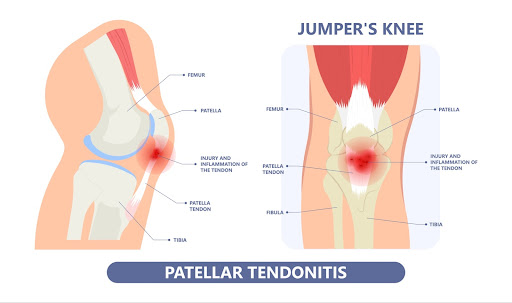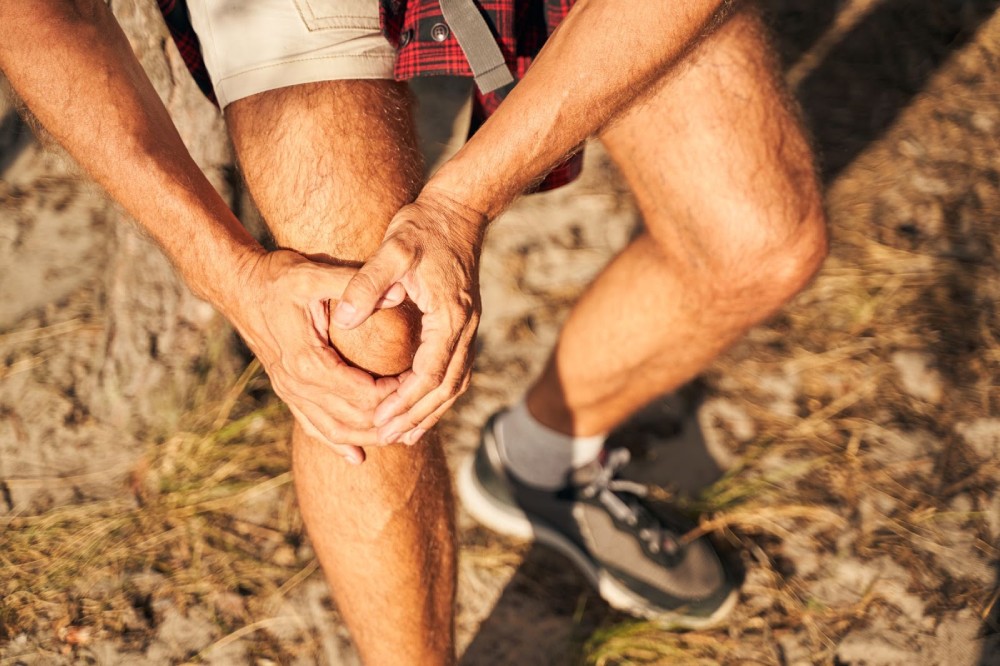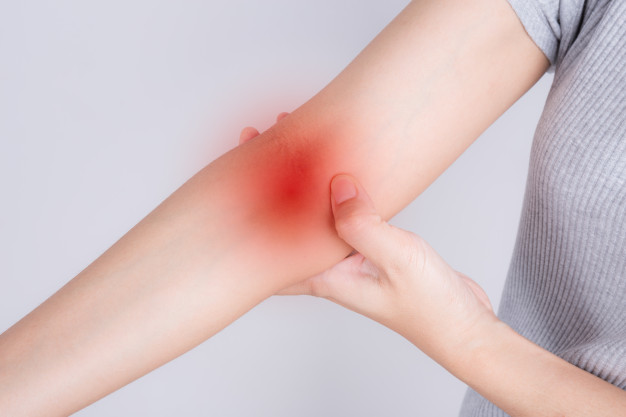Written by Dr Gowreeson Thevendran, MBChB (Bristol), MRCS.Ed, Dip. Sports Med.Ed, FRCS.Ed (Trauma & Ortho. ), FAMS (Singapore)
What is Patellar Tendonitis?
Patellar tendonitis, also known as jumper’s knee, is an injury to the tendon that connects your kneecap to your shin bones. This is the same tendon that allows you to straighten your knees. This condition is characterised by inflammation of the patellar tendon, which results in pain and tenderness at the front of the knees. Swelling may be present in the area, and the pain may be especially severe when kneeling, bending or straightening your knee. Jumping, running and walking will also be affected. If left untreated, tears may occur in your tendon.
Symptom of Patellar Tendonitis
There are a few symptoms of patellar tendonitis. The most common are:
- Pain and tenderness below your kneecap
- Swelling around your kneecap
- Pain when bending or straightening your leg
- Tenderness behind the lower part of your kneecap
Diagnosing Patellar Tendonitis
Patellar tendonitis can be mistaken for other injuries including quadriceps injury, knee bursitis, meniscal injuries as well as other pathologies of the knee. An orthopaedic specialist will usually diagnose this condition based on your symptoms and a physical examination. An X-ray, ultrasound or other medical imaging technology may be needed to clarify the severity of your condition.
Additionally, the attending physician will analyse your symptoms around the kneecap to account for tenderness, pain, swelling, bruising or discomfort. They will also assess which stage of patellar tendonitis you might be at, considering your activities and symptoms:
Stage 1
During this stage, you may still be able to go about your daily activities without any functional impairments, with pain only occurring after the activity.
Stage 2
In the second stage, pain may be experienced both during and after activities, although it is possible for an individual to perform activities as normal.
Stage 3
In the third stage, pain is experienced during activities and persists long after. Athletic performance is progressively impaired and can only be achieved by “powering through the pain”.
Stage 4
In the fourth stage, the patellar tendon will have deteriorated to such an extent that surgical repair may be the only way to recover from the injury.

Non-surgical Patellar Tendonitis Treatment
In order to manage patellar tendonitis, physiotherapy may be prescribed to aid with the flexibility of muscles surrounding the knee, like the quadriceps and hamstring. Some physicians may also prescribe anti-inflammatory injections or analgesic medication to address the pain. Other therapy options for patellar tendonitis include dry needling, hypothermia thermotherapy and extracorporeal shockwave therapy.
The type of therapy administered will depend on the individual's specific condition, including the severity of their symptoms and how they respond to initial therapies.
What Happens During Patellar Tendonitis Surgery
Most cases of patellar tendonitis can be managed with non-operative support. This means that invasive options like knee surgery are often recommended as a last resort for severe tendon tears once more conservative and non-invasive options have been exhausted.
If advised, an arthroscopic debridement surgery may be carried out. This surgery involves inserting a small camera and surgical instruments into the knee joint to help the surgeon remove damaged tissue. If your patellar tendon needs to be realigned, your doctor may opt for an arthroscopic resection of the inferior aspect of the patella.
Recovery Period For Patellar Tendonitis Surgery
As with all conditions, the time taken for full recovery will depend on the individual’s condition. Most people with mild to moderate patellar tendonitis should experience some level of improvement in their condition within the first few months with diligent rest and strengthening exercises.
Additionally, it is recommended to continue with physical therapy even after your initial injury has healed to help reduce the risk of recurrent injury or your condition turning chronic.

Dr Gowreeson Thevendran
MBChB (Bristol), MRCS.Ed, Dip. Sports Med.Ed, FRCS.Ed ( Trauma & Ortho. ), FAMS (Singapore)
Dr Gowreeson Thevendran is an orthopaedic surgeon who specialises in lower limb orthopaedic conditions, trauma, and fracture surgeries of both the upper and lower limbs. He received his medical education from the University of Bristol and completed his surgical training in the UK and Canada. Before establishing his private practice, he served as Chief of Foot & Ankle Surgery, Department of Orthopaedics at Tan Tock Seng Hospital, Singapore.
Dr Gowreeson Thevendran’s Qualifications and Awards:
- Bachelor of Medicine and Surgery, University of Bristol, England
- Fellow of the Royal College of Surgeons, Edinburgh
- Diplomate Faculty of Sports and Exercise Medicine, Royal College of Surgeons Edinburgh
- Fellow of the Academy of Medicine, Singapore
- SICOT PIONEER Founders Award 2020
- 2015 European Foot & Ankle Society ‘Best Podium Presentation’ Award
- 2013 Singapore Orthopaedic Association Junior Travelling Fellowship
- 2012 NHG Critical Talent Special Recognition Award
- 1998 Enid Lindt Prize in Clinical Surgery
- 1995 Public Services Department Full Medical Scholarship
COMMON ORTHOPAEDIC CONDITIONS WE TREAT
GENERAL
Frequently Asked Questions About Patellar Tendonitis
While it might be tempting to power through the pain and participate in athletic competitions as per usual, this is not advisable as you’ll run the risk of causing your condition to worsen.
Therefore, athletic participation should be minimised and only engaged in after consulting with a trained physician. Your physician will be able to come up with a management plan taking into account your athletic goals and the health of your body. Additionally, daily exercises should be modified to include adequate warm-ups and rest periods, with priority given to knee strengthening exercises.
Patellar tendonitis is often caused by the overuse or injury of the knee joint. It is commonly experienced by:
- Individuals who frequently engage in activities that result in high impact on the knee area, such as frequent squatting or jumping on hard surfaces.
- The elderly whose tendons are less elastic and more prone to injury.
- Individuals with structural abnormalities in the lower limbs, like flat feet or weak gluteal muscles.
Additionally, patellar tendonitis can occur from a sudden increase in activity, poor training techniques, improper footwear, and insufficient warm-up and stretching exercises. If the individual continues to power through with strenuous activity despite the pain, microscopic fractures on the lower edge of the kneecap can occur. The soreness will likely develop into a chronic condition.
Related posts
Clinic Location
OrthofootMD@Novena
- Mount Elizabeth Novena
38 Irrawaddy Road #05-42 Mount Elizabeth Novena Specialist Centre Singapore 329563
OrthofootMD@Mount Alvernia Hospital
- (Mount Alvernia Hospital)
820 Thomson Road #01-01/02 Mount Alvernia Medical Centre A Singapore 574623
Dr Gowreeson Thevendran is currently an orthopaedic surgeon with Island Orthopaedic, a one-stop care centre for orthopaedic health under Healthway Medical Group. He specialises in treating lower limb orthopaedic conditions, as well as trauma and fracture surgery of both the upper and lower limbs. Prior to establishing his private practice, Dr Gowreeson was Chief of Foot & Ankle Surgery at the Department of Orthopaedics at Tan Tock Seng Hospital (TTSH). Today, he continues to serve the Orthopaedic Department at TTSH as a visiting consultant.


